Student athletes take on two sports
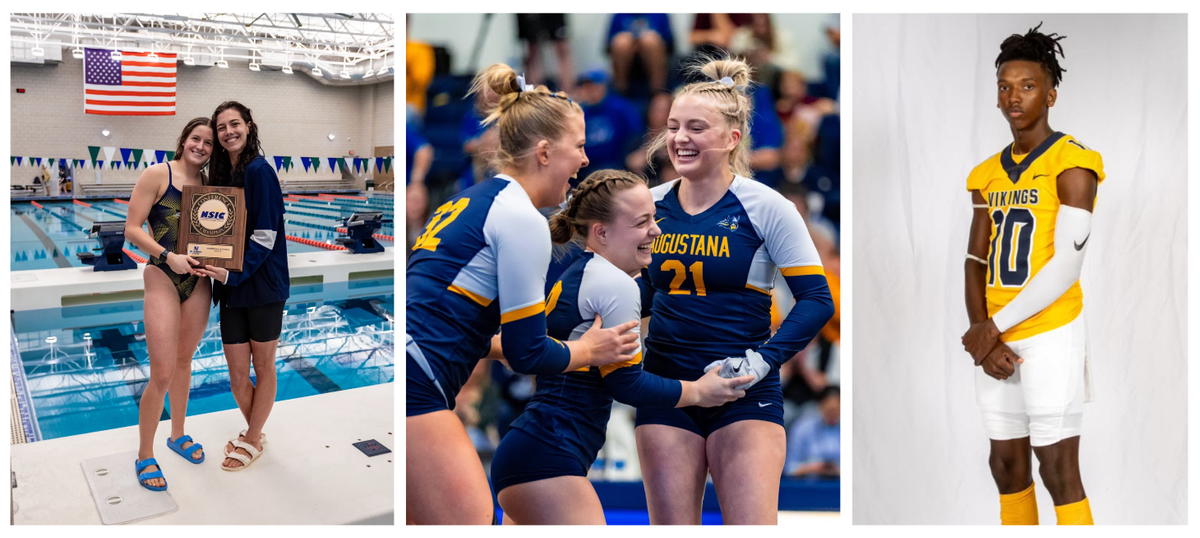
Her first Viking Days as an Augustana student was far from normal.
Maggie Szerlong began that Saturday with acrobatics and tumbling practice in the Elmen Center at 8 a.m. She then walked in the homecoming parade with her teammates at 10:30 a.m. At the end of the parade, she ran across the street, started up her car and drove to the Midco Aquatic Center to compete in a diving meet.
On a Wednesday in March, a freshman outfielder warmed up with the Vikings baseball team at Ronken Field before a game against Southwest Minnesota State University. Trey Malone then headed to a meeting with his football coach while SMSU warmed up before hurrying back to Ronken Field for the start of the game.
One swimmer spent the break between the NSIC conference meet and NCAA nationals gearing up for a track meet after not practicing high jump for two months. Bryn Greenwaldt lifted with her swim team in the morning, swam and then went to the track meet, where she set a personal record.
These are only a few of Szerlong’s, Maloney’s and Greenwaldt’s most hectic memories of being two-sport athletes at Augustana.
Out of more than 550 student athletes at Augustana, just a handful participated in two separate sports this academic year, not including track and cross country runners. These athletes included sophomores Ava Brogren and Greenwaldt, who both participate in high jump during track’s outdoor season and compete on the women’s swimming team; Szerlong, a sophomore diver and base and tumbler on the acrobatics team; and Malone, a pitcher and outfielder on the baseball team and a cornerback on the football team.
Tim Homan, the student-athlete academic specialist, said multi-sport athletes are uncommon at the collegiate level.
“Once you hit college, whether it’s the academic side or the athletic side, you’re at the next level up,” Homan said. “It takes a person that’s very good at time management, good at their study skills.”
While many athletes take on two, or even three, sports in high school, swimming and diving coach Andrew Makepeace said the length of many college sports makes competing with multiple teams more difficult. For example, the swimming and diving teams start classes and practice in the fall and end their season in mid-February. Those who make it to nationals swim until March.
“It’s not super common because of the time commitments,” Makepeace said. “It’s like the linchpin. It holds everything together.”
Although the anticipated time commitments didn’t intimidate all four two-sport athletes, most of them had not always planned to play a sport in college, let alone two.
Szerlong, who was a gymnast for 17 years, found acrobatics and tumbling through her Chicago gymnastics gym, which sent many athletes to university teams. She said she found acrobatics and tumbling to be “cool,” but didn’t plan on doing sports in college.
After she attended an acrobatics camp at Baylor University and met Augustana’s now acrobatics and tumbling coach Kaelyn Cowan, Szerlong decided to visit Augustana and join the roster.
“I liked the setting,” Szerlong said. “I liked where we were located and the environment here.”


(Left) Maggie Szerlong dives into the water at the Midco Aquatic Center. Photo submitted by Maggie Szerlong. (Right) Maggie Szerlong, front left, walks into the Elmen Center gym with her acrobatics and tumbling team. Photo by GoAugie.
Malone stopped playing football his sophomore year of high school after he broke his thumb. He said his parents thought baseball was going to be his college sport, and they suggested he focused on healing his thumb properly so he could achieve that goal.
“But I ended up going back to football my junior year,” Malone said. “I had a good season, started getting recruited by different schools. And senior year is when Augie came calling.”
When some of the athletes discovered Augustana coaches to be more willing than other schools to help them compete in two sports, their journeys as Vikings were set in motion.
“[Former coach Lindsie Micko] was super on board with it and was super excited about it,” Greenwaldt said. “All of it, combined on top of the fact that the swim team here is super strong, it was just like it made a great combo, like that’s a place that will fit what I’m looking for.”
Greenwaldt said when she talked to other schools in the Midwest, the coaches were less flexible and less excited to help her compete on both the swim and track teams. Makepeace said Brogren and Greenwaldt both found several recruiting schools to be less accommodating in helping the women become multi-sport college athletes.
“And they were just like, ‘No, we don’t think you should do that. You’re gonna be stretched too thin,’” Makepeace said. “It’s like, yeah, but if you want to do these things and it’s an option and you can communicate and work effectively with other people, it’s pretty cool. Then why not?”
According to Homan, the coaching staff play a large role in making it possible for these students to play dual sports. He said more off-season activity for athletes, such as lifts and service, means cooperation among coaches and students is key.
“It takes a good person with good communication and the coaches with good communication to where they’re going to help each other out,” Homan said.
Makepeace said these possibilities result in part from the smaller size of Augustana.
“I guess there’s a lot more willingness for coaches to kind of collaborate and do things together at a school like ours,” Makepeace said. “And so that’s unique in its own right, and I think that’s an advantage that we have over a lot of institutions.”
For Szerlong, that collaboration means ensuring she finds a healthy balance between diving and acrobatics and tumbling, as Makepeace said she’s well-versed in doing multiple sports at a time.
“It’s more about making sure that she has appropriate breaks in her schedule,” Makepeace said. “She has to have a day off, and so I think those things can be challenging, but if somebody has the desire or wherewithal to do it, they can. They can certainly make things work.”
However, Szerlong, a business administration and communications major, said the similarity of the sports’ skill sets allow her to improve her performance both in the pool and on the mat. She said the flipping, air awareness, twisting and spotting all go hand-in-hand. One of the only differences is adding another half digit to the flips in her dives.
“It’s really cool because I will see a dive improve at practice and then I’ll go and start tumbling for acro, and it’s better there too,” Szerlong said.
On the football field, Malone’s baseball techniques of tracking the ball helps him track the football while it’s in the air and helps with his catching ability and hand-eye coordination.
Malone’s work on the football field brings a bit of a different benefit on the diamond.
“There’s still always a thought in the back of your head like you might get hit with the baseball,” Malone said. “That’s not really too big of a factor for me because I feel like if I’m getting hit by other humans, like a baseball, it doesn’t hurt.”
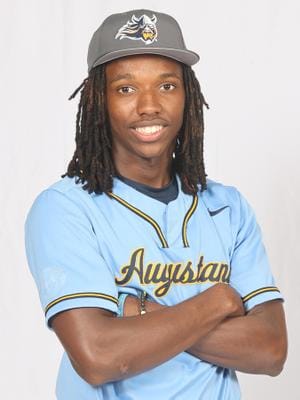
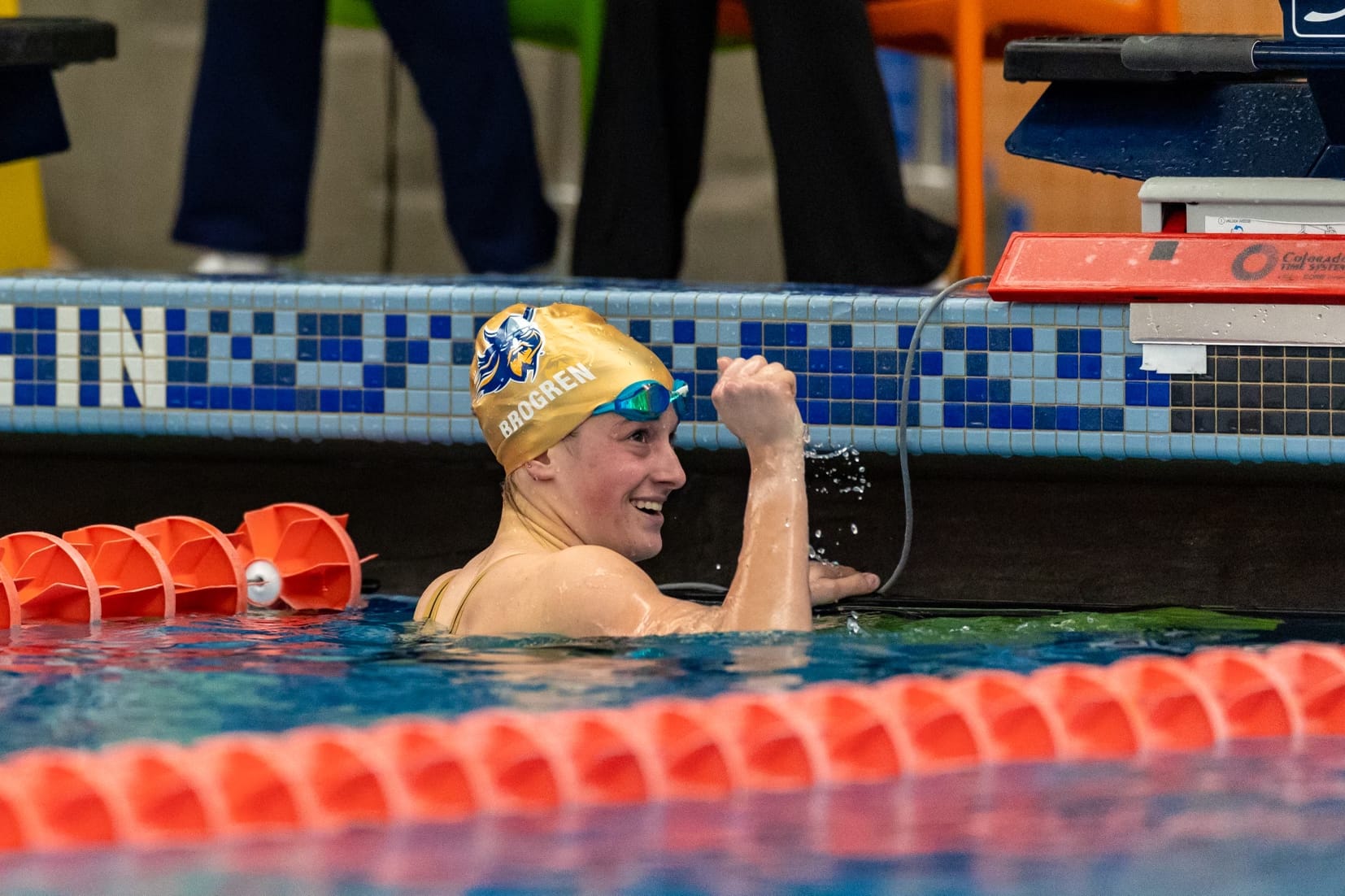
(Left) Trey Malone smiles in his baseball jersey. Photo by GoAugie. (Right) Ava Brogren finishes an event at a swim meet. Photo submitted by Ava Brogren.
Greenwaldt and Brogren said both swimming and track involve fast, explosive movements. Training in one sport helps perfect their shape in the other.
“Being a high jumper, I jump off with one leg, so the plyometric work kind of helps with in the pool. I do a start off the same leg, so I mean they’re kind of intertwined a little bit,” Brogren said.
According to Makepeace, playing two sports must not lead students to sacrifice other areas of their lives, like academics and mental health.
“If somebody is completely overwhelmed constantly, it’s not going to help them at all,” Makepeace said.
Additionally, Makepeace said the stress factor for competing in sports, like diving and acrobatics and tumbling for example, can quickly result in injury. As a result, staying on top of schedules and managing time well is essential for two-sport athletes’ success.
From the Google Calendar app to Post-It-note reminders, the two-sport athletes manage to keep their school work and athletic commitments organized.
Greenwaldt, Brogren and Szerlong often start their fall mornings with a team weight lift at 5:45 a.m.. Classes are slated from 8 a.m. to 2 p.m., and then the women are off to their respective practices. Szerlong heads to the Elmen Center for acrobatics and tumbling practice from 5-7 p.m., and Brogren and Greenwaldt often work on their jumps around 6 p.m. several times a week.
When it comes to meets and games, the four students don’t often find conflicts. For example, Szerlong said she has dive meets on the weekends in the fall while acrobatics and tumbling typically has a few camps or showcases. Meets for both occur in January.
Malone said he only misses a football practice if he has a baseball game, but on days where he knows he won’t be playing in a game, he’s often able to go to football practice.
On the academic side, Homan said these athletes’ management of time in the classroom and on the field looks similar to that of most other student athletes — it requires good communication.
“If you take off and you don’t ever say anything to your professors, they’re gonna say, ‘We’re trying to help you, but you gotta let us know also,’” Homan said. “And that’s why communication is so important.”
However, Homan said academic success comes down to more than just time management. Students have to employ optimal study habits. Student athletes have to learn how best to absorb academic and athletic information. Improvement on the field can often result from learning how to concentrate in the classroom.
“That’s where it takes a person with skills that you see the crossover,” Homan said. “And that’s what I tell athletes all the time. If you’re getting better in the classroom, you’re getting better on the competition.”
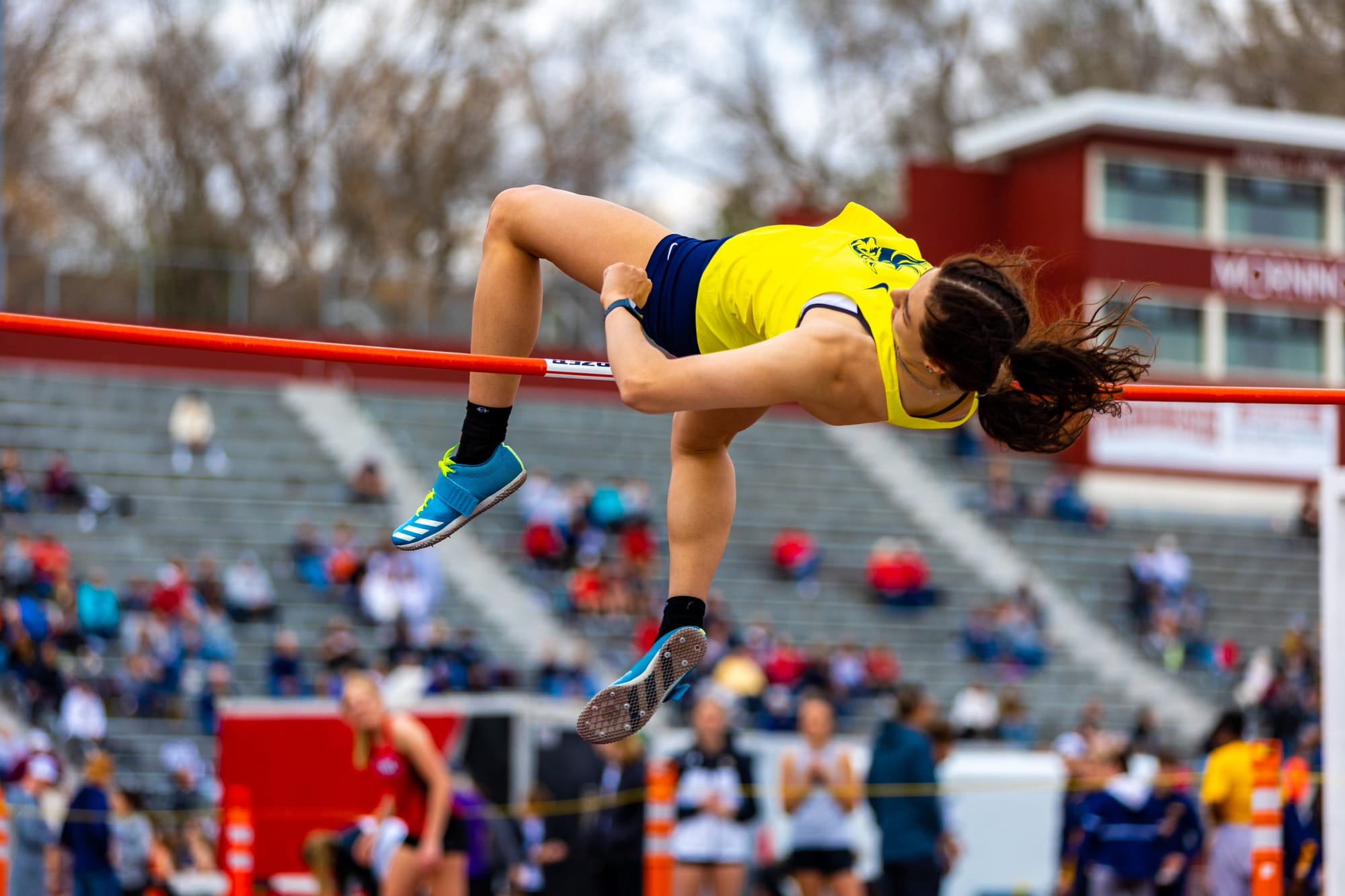
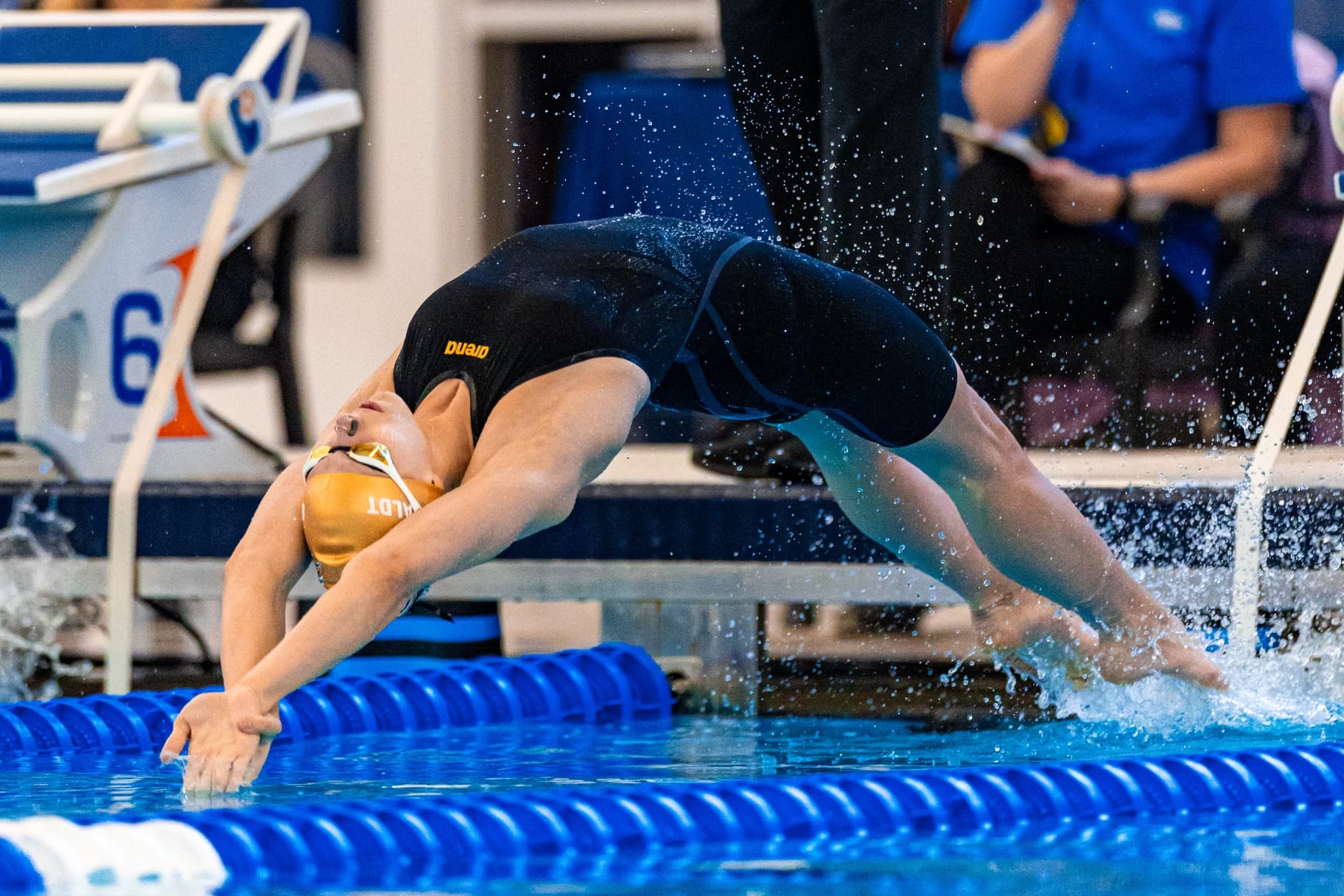
(Left) Bryn Greenwaldt nails a jump at a track and field meet. Photo submitted by Bryn Greenwaldt. (Right) Bryn Greenwaldt launches into the pool. Photo submitted by Bryn Greenwaldt.
Greenwaldt, an accounting and business administration major, said she has enjoyed seeing her academic performance flourish as she has grown accustomed to managing college while participating in two sports.
“Despite doing two sports and competing two sports and doing all that jazz, I got a 4.0 last semester,” Greenwaldt said. “I'm doing well this semester, so it has been cool to watch it all play out, how even after a year, you can kind of just find your way and find the balance.”



